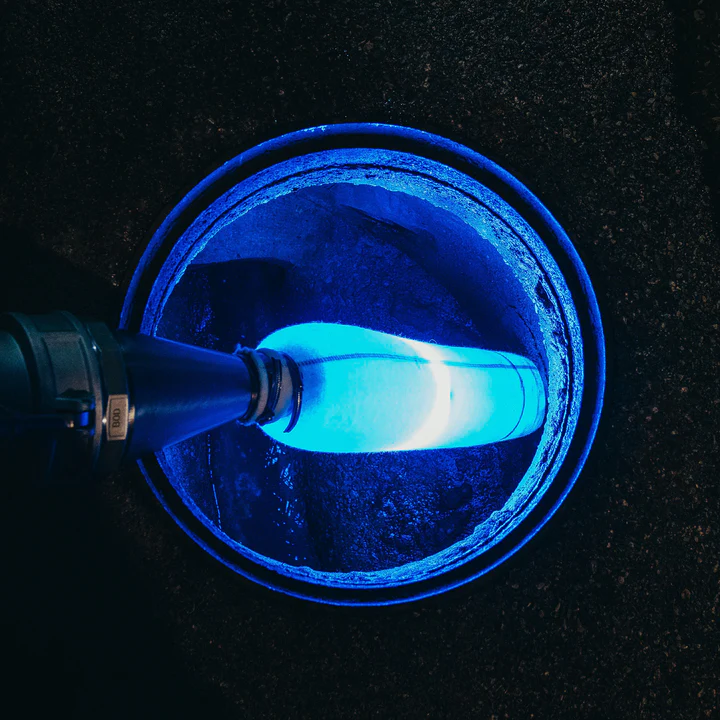
Understanding UV and Epoxy Resins
UV Resins
UV-cured resins solidify and cure rapidly when exposed to ultraviolet (UV) light. These resins are designed with photo-initiators that activate polymerization upon UV exposure, allowing for minimal downtime. Key characteristics include:
- Rapid curing times, often within minutes.
- Exceptional adhesion, creating tight seals within the host pipe.
- Flexibility, making them suitable for curved or non-linear pipe systems.
Epoxy Resins
Epoxy resins are thermosetting polymers that cure when mixed with a hardener. This chemical reaction produces a robust, durable, and chemically resistant material. Notable features include:
- Superior structural strength for load-bearing pipes.
- High resistance to chemicals and abrasive materials.
- Versatility in conforming to pipes of various shapes and sizes.
Key Comparisons: UV vs. Epoxy Resins
- Curing Time UV Resins: Cure within minutes, ideal for projects demanding speed and minimal disruption. Epoxy Resins: Require longer curing times, but products like Houseliner offer customizable hardeners to match ambient conditions, providing a tailored working time.
- Structural Integrity Epoxy Resins: Deliver unmatched structural reinforcement, restoring pipes to their original load-bearing capacity. UV Resins: Provide reliable sealing but may not match the structural robustness of epoxy.
- Chemical and Abrasion Resistance Epoxy Resins: Perform exceptionally well in harsh industrial environments, resisting corrosion and abrasion. UV Resins: Suitable for less chemically aggressive applications but may fall short in high-demand scenarios.
- Flexibility and Working Time UV Resins: Allow virtually unlimited working time until exposed to UV light, reducing stress during complex installations. Epoxy Resins: Offer flexibility but come with limited working time, requiring precise planning.
- Installation Process UV Systems: Require specialized UV light equipment, which can increase upfront costs but shorten project duration. Epoxy Systems: Involve resin-hardener mixing and curing via temperature control, demanding skilled technicians for success.
Choosing the Right Resin for Your Project
Selecting the right resin depends on project-specific needs. Consider the following factors:
- Speed of Completion: Opt for UV resins when fast turnaround is essential.
- Structural Strength: Choose epoxy resins for projects requiring maximum load-bearing capabilities.
- Chemical Exposure: For pipes in harsh environments, epoxy resins provide superior protection.
- Budget and Equipment: Assess whether you have the necessary UV curing equipment or resources for epoxy curing.
Practical Tips for Trenchless Professionals
Educate Customers: Highlight the advantages of UV or epoxy resins based on their needs. Use visuals and case studies on your website to illustrate the benefits of each option.
Streamline Workflow: Incorporate digital tools to track curing times, ambient conditions, and project progress for both resin types.
Leverage SEO for Visibility: Optimize blog posts with keywords like “UV-cured resin CIPP,” “epoxy pipe repair,” and “trenchless sewer repair.” Include location-specific terms for local searches.
Collaborate with Experts: Partner with resin manufacturers and training organizations to stay updated on innovations and best practices.
Market Sustainability: Emphasize the eco-friendly benefits of CIPP to attract environmentally conscious clients.